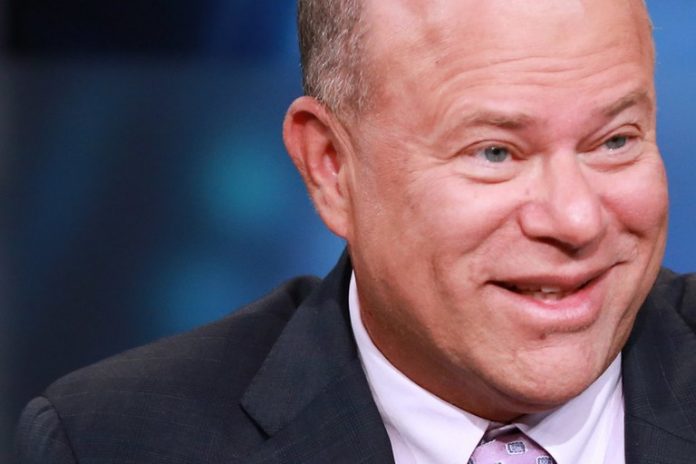“I love riding a horse that’s running,” said hedge fund manager (and Carolina Panthers owner) David Tepper in an interview with CNBC. In light of the holiday break, investors are taking a long look at what the market could do next.
Tepper, who made a killing during the 2008 financial crisis, doesn’t see any reason to dump bullish positions.
Not quite yet, at least.
“[I have] been long and will continue that way,” he said to Joe Kernon, co-host of Squawk Box, on Friday.
It’s a bit of a surprising stance from someone who thrived during an equity collapse. Back in October 2007, stocks were trading at an all-time high. Bulls celebrated as the market had finally exceeded the Dot-Com bubble highs.
Then, disaster struck.
Some investors lost everything. Most saw their retirement accounts shrink.
A select few got filthy rich. Tepper’s hedge fund – Appaloosa Management – did just that, but not by going the “big short” route. Appaloosa actually lost 25% during the subprime mortgage crash after Tepper placed big bets on American blue-chip stocks.
But when the market bottomed, Tepper took his shot, snatching-up equity in beleaguered banks. Other investors wouldn’t touch them with a 10-foot pole, of course. Banks had gotten the U.S. into this mess; why buy their stock?
Tepper was originally called a fool for doing so. In the end, though, he (and Appaloosa clients) had the last laugh.
From March 2009 – April 2010, S&P bank shares soared 160%. Washington Mutual and Wachovia – two banks from which Tepper purchased preferred shares – were bought out by larger rivals, rewarding Appaloosa with a huge windfall. The fund also grabbed roughly $2 billion worth of commercial mortgage backed securities floated by AIG. When the U.S. government bailed out America’s major banks, Appaloosa made over $7 billion in profits as a result.
Some analysts have called Tepper’s post-crash moves “the greatest trades ever made.”
And these days, the legendary hedge fund manager says that investors should stay in their long positions.
But that’s not to say Tepper expects stocks to rise forever.
“At some point, the market will get to a level that I will slow down that horse and eventually get off,” he said, continuing with the equine metaphors. And until we start seeing signs of a correction, Tepper won’t “fight the tape” – a Wall Street term used to describe trading against the current market trend.
Historically, the market has gone up. Yes, there have been contractions, but in general, equities have risen long-term when left to their own devices.
In that regard, Tepper’s advice is spot-on.
But he also said the same things back in 2007, when his fund was heavily invested in blue-chips.
Most of which got nailed in 2008.
However, the real lesson to be learned here is how staying “nimble” during a time of financial ruin can pay-off handsomely. Almost nobody saw the housing crisis coming outside of a miniscule handful of bears. Scores of stubborn bulls – most of which were passive, buy-and-hold investors – went “down with the ship,” tightly clutching stocks they should’ve been selling.
Tepper didn’t do that. Instead, he admitted defeat on his “loser” investments and moved on to greener pastures, where Appaloosa made historic gains for its clients.
So, even though Tepper’s not ready to hop-off his “horse,” that doesn’t mean he won’t should a downturn arise. Active investing – not passive investing – produced some of the greatest trades of all time. It’s a free lesson that every investor can use.
And the best part of it all?
You don’t have to manage a multi-billion dollar hedge fund to do it.








